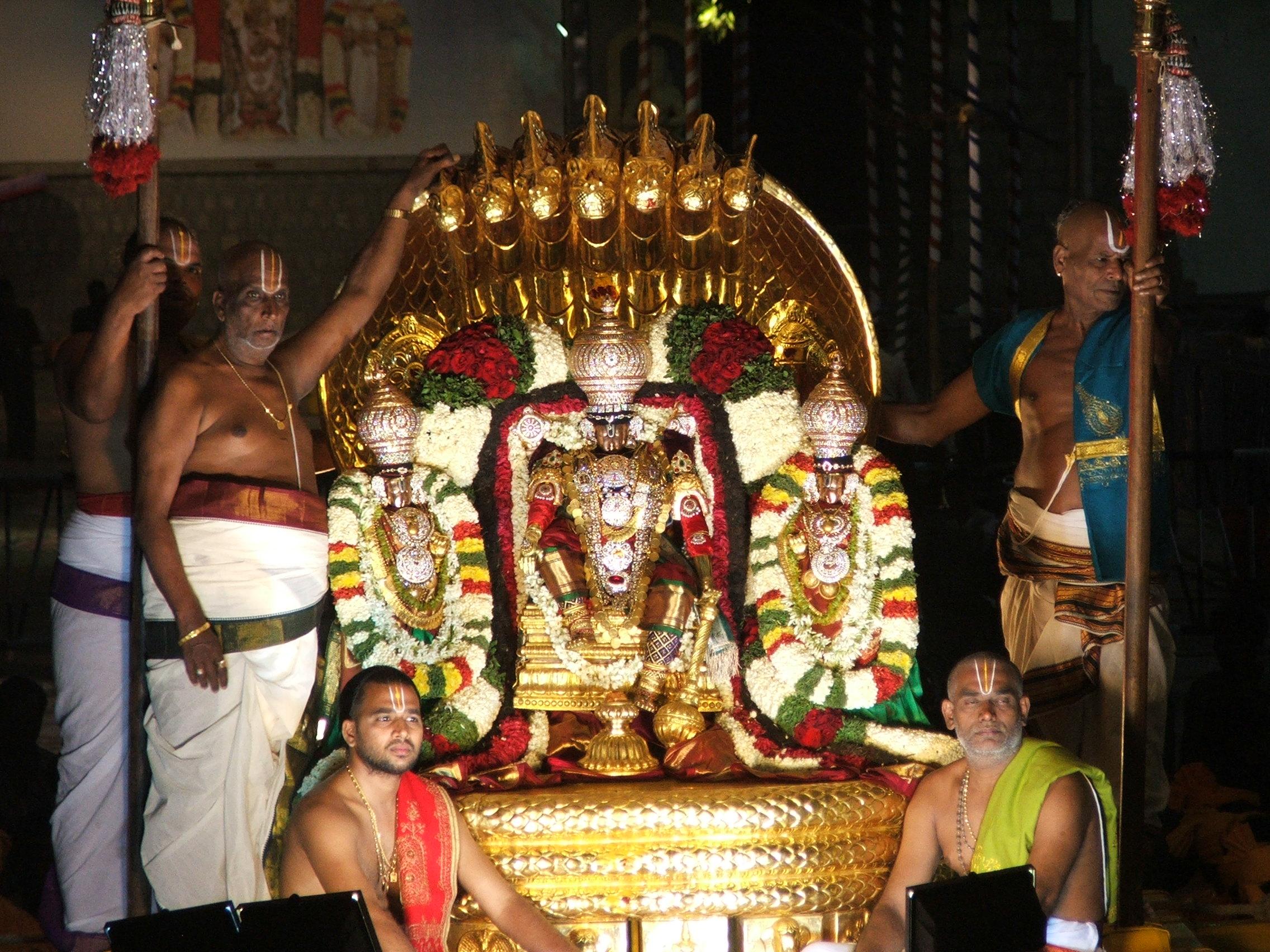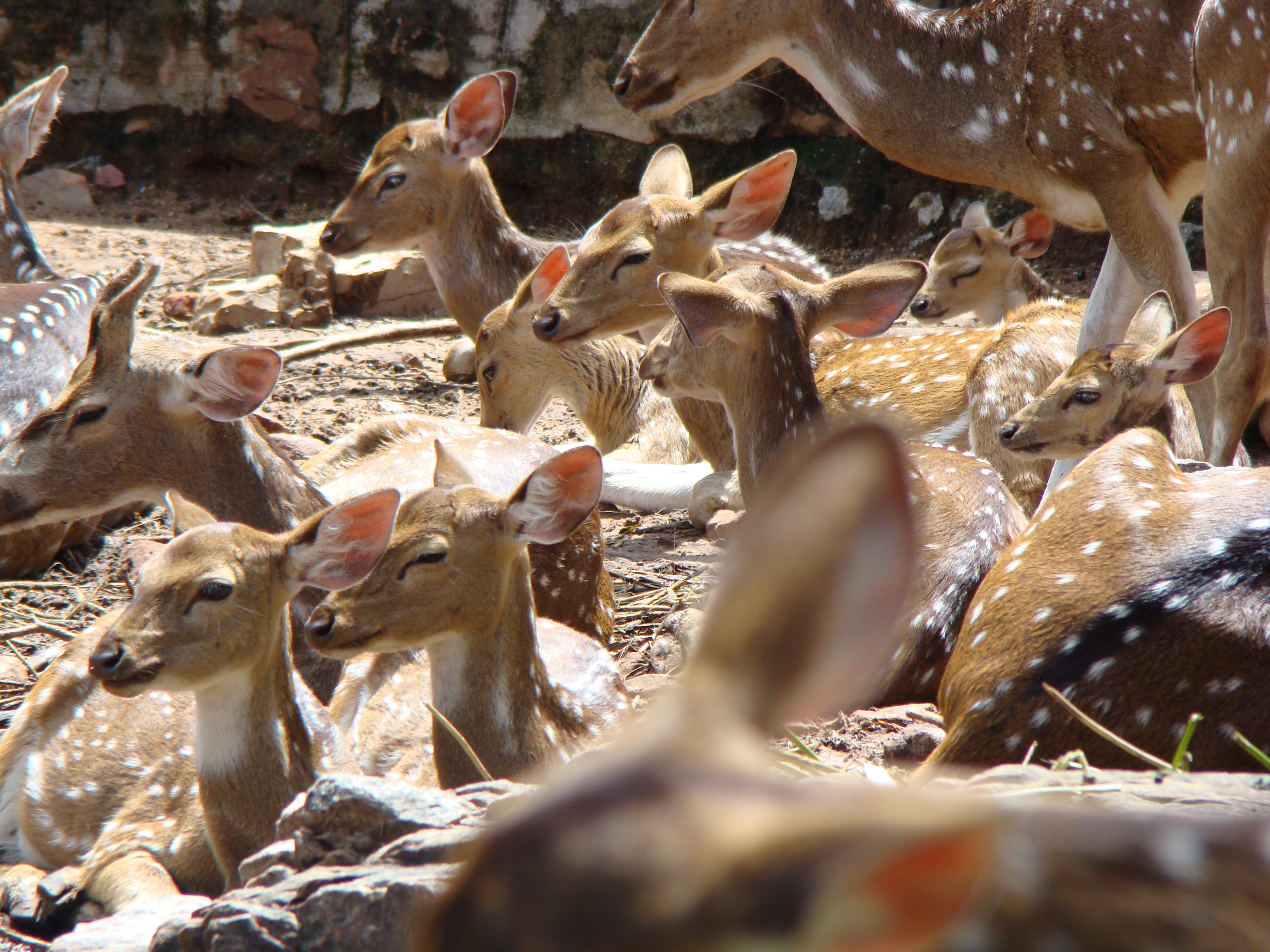|
Tirumala Dhruva Bera
Tirumala Dhruva Bera is the name given to the deity of Lord Venkateswara in Tirumala Venkateswara Temple, Andhra Pradesh. ''Dhruva Bera'' is the official terminology used for the main deity of a temple with the exact translation being ''The Immobile image'' and as the name suggests, the deity is stationary and other deities are used for ''pujas'', ''sevas'' that requires the deity's presence outside the (sanctum sanctorum). Other terms used for Dhruva Bera include ''Moolavar'' or ''Moola Virat'' (Main Deity), ''Achala'' (Stagnant). Tirumala Dhruva Bera is considered to be Swayambhu - self-manifested and not created by human. According to Sri Venkatachala Mahatyam, Lord Venkateswara came to reside in this sacred spot to provide blessings to devotees in the ''Kali Yuga''. The deity does not conform to the ''agamas'' (rules) for making a deity, thus furthering the belief that the temple's deity is Swayambhu. Deity description The dhruva bera stands approximately ten feet tall and ... [...More Info...] [...Related Items...] OR: [Wikipedia] [Google] [Baidu] |
Venkateswara
Venkateswara, also known by various other names, is a form of the Hinduism, Hindu god Vishnu. Venkateswara is the presiding deity of the Tirumala Venkateswara Temple, located in Tirupati, Sri Balaji District, Andhra Pradesh, India. Etymology Venkateswara literally means, "Lord of Venkata (hill), Venkata". The word is a combination of the words ''Venkata'' (the name of a hill in Andhra Pradesh) and ''isvara'' ("Lord"). According to the ''Brahmanda Purana, Brahmanda'' and ''Bhavishya Purana, Bhavishyottara'' Puranas, the word "Venkata" means "destroyer of sins", deriving from the Sanskrit words ''vem'' (sins) and ''kata'' (power of immunity). It is also said that 'Venkata' is a combination of two words: '''ven''' (keeps away) and kata''' (troubles). Venkata means he 'who keeps away troubles' or 'who takes away problems' or such terms in a similar context. Legend Every year, hundreds of thousands of devotees donate a large amount of wealth at the Tirumala Venkateswara Temple ... [...More Info...] [...Related Items...] OR: [Wikipedia] [Google] [Baidu] |
Dhoti
The dhoti, also known as veshti, vetti, dhuti, mardani, chaadra, dhotar, jaiñboh, panchey, is a type of sarong, tied in a manner that outwardly resembles "loose trousers". It is a lower garment forming part of the ethnic costume for men in the Indian subcontinent. The ''dhoti'' is fashioned out of a rectangular piece of unstitched cloth, usually around long, wrapped around the waist and the legs and knotted, either in the front or the back. The ''dhoti'' is touted as the male counterpart of the ''sari'' worn by females to religious and secular ceremonies ( functions). is a yellow silk dhoti, worn on auspicious occasions. The dhoti which is worn around the lower waist and drawn up in between the legs, is a 5-yard-long piece of woven fabric; it must not be confused with pre- stitched "dhoti pants", which are a new ready to wear trend these days, popular among women and typical of children. Etymology The word ''dhoti'' is derived from ''dhauti'' (Sanskrit: धौती), transl ... [...More Info...] [...Related Items...] OR: [Wikipedia] [Google] [Baidu] |
Laddu
''Laddu'' or ''laddoo'' (; ms, kuih laddu; id, kue laddu) is a spherical sweet originating from India and spread through the Indian subcontinent and the Malay world. Laddus are primarily made from flour, fat (ghee/butter/oil) and sugar or jaggery. Laddus are often made of gram flour but can also be made with semolina. Sometimes ingredients such as chopped nuts and/or dried raisins can also be added. The type of ingredients used vary by recipe. Laddus are often served during festive or religious occasions. Etymology ''Laddu'' is derived from Sanskrit लड्डुक (laḍḍuka; a kind of sweetmeat). History At the Harappa archaeological site near Binjor in western Rajasthan, seven similarly sized laddus, consisting of legumes and cereals such as barley, wheat, chickpea and mung bean, were found in intact form, along with two figurines of bulls and a hand-held copper adze, during 2017 archeological excavations. According to Rajesh Agnihotri, the presence of bull f ... [...More Info...] [...Related Items...] OR: [Wikipedia] [Google] [Baidu] |
Malayappa Swami
Malayappa Swami is the current ''utsava murti'' (procession deity) in the Tirumala Venkateswara Temple, Tirumala. Malayappa Swami is worshipped during religious ceremonies and processions wherein it would be inappropriate to use the main deity (for example one which requires the deity to be carried or moved). The two deities are worshipped equally and believed to be non-different in personality. The Malayappa deity is classed as a Swayambhu and was discovered in 1339 AD. Initial records state his original name as ''Malai Kuniya Ninra Perumal'' (Lord stood on the hill which bowed low to Him) History Ugra Srinivasa was the first ''utsava murti'' (procession idol) at the Tirumala Temple. In the 14th century AD, it is said that during the procession, a fire broke out in the village and destroyed most of the houses. Many believe the fire happened because of Ugra Srinivasa's angry aspects since ''Ugra'' means angry. A vision appeared to a devotee stating that the Ugra Srinivasa idol ... [...More Info...] [...Related Items...] OR: [Wikipedia] [Google] [Baidu] |
Bhoga Srinivasa
Bhoga Srinivasa is a silver deity that is a near-replica of the main deity (''Dhruva Bera'') of the Tirumala Venkateswara Temple in Tirumala, Andhra Pradesh, India. The deity is also known as ''Manavalapperumal'' or ''Kautuka Bera''. The deity is used daily for performing the Abhishekam ceremony (as part of Thomala Seva) and the Ekanta Seva. The deity is believed to imbibe the essence of the ''Dhruva Bera'' as well as grant devotees' wishes. Bhoga Srinivasa was consecrated to the temple in 614CE by the Pallava queen Samavai (also known as Kadavan-Perundevi) along with donation of land and gold to the temple. The idol is a faithful copy of the Dhruva Bera except that the Shankha and Sudarshana Chakra are fixed in the case of Bhoga Srinivasa. On the pitham and below the feet of the deity is a Yantra that is in the shape of two interplaced equilateral triangle. The deity is connected permanently to the ''Dhruva Bera'' by means of a silk cord. When the deity is brought outside the sa ... [...More Info...] [...Related Items...] OR: [Wikipedia] [Google] [Baidu] |
Armlet
A brassard or armlet is an armband or piece of cloth or other material worn around the upper arm; the term typically refers to an item of uniform worn as part of military uniform or by police or other uniformed persons. Unit, role, rank badges or other insignia are carried on it instead of being stitched into the actual clothing. The brassard, when spread out, may be roughly rectangular in shape, where it is worn merely around the arm; it may also be a roughly triangular shape, in which case the brassard is also attached to a shoulder strap. The term is originally French, deriving from ''bras'' meaning "arm". Brassards are also used with the uniforms of organizations which are not military but which are influenced by and styled upon the military, such as police, emergency services, volunteer services, or militaristic societies and political parties. A brassard is often used: * to temporarily attach insignia, such as rank, to clothing not normally bearing insignia (such a ... [...More Info...] [...Related Items...] OR: [Wikipedia] [Google] [Baidu] |
Necklace
A necklace is an article of jewellery that is worn around the neck. Necklaces may have been one of the earliest types of adornment worn by humans. They often serve Ceremony, ceremonial, Religion, religious, magic (illusion), magical, or Funerary art, funerary purposes and are also used as symbols of wealth and status, given that they are commonly made of precious metals and stones. The main component of a necklace is the band, jewellery chain, chain, or cord that wraps around the neck. These are most often rendered in precious metals such as gold, silver, and platinum. Necklaces often have additional attachments suspended or inset into the necklace itself. These attachments typically include pendants, lockets, amulets, crosses, and precious and semi-precious materials such as diamond, pearls, Ruby, rubies, emeralds, garnets, and sapphires. They are made with many different type of materials and are used for many things and sometimes classed as clothing. Historical Necklaces ... [...More Info...] [...Related Items...] OR: [Wikipedia] [Google] [Baidu] |
Tirumala Rama Deity
Tirumala is a spiritual town in Tirupati district of the Indian state of Andhra Pradesh. It is one of the suburbs of the Tirupati urban agglomeration. The town is a part of Tirupati Urban Development Authority and located in Tirupati (rural) mandal of Tirupati revenue division. It is a hill town where Tirumala Venkateswara Temple is located, which is the abode of Vishnu. The town is strictly vegetarian. Geography Tirumala is located above sea level and covers an area of approximately . Surrounding the hills are seven peaks of Seshachalam range, Eastern Ghats namely Seshadri, Neeladri, Garudadri, Anjanadri, Vrushabadri, Narayanadri and Venkatadri. The temple of Sri Venkateswara is on the seventh peak ( Venkatadri). At the point on the Tirupati – Tirumala Ghat road, there is a major discontinuity of stratigraphic significance that represents a period of remarkable serenity in the geological history of the Earth. This is referred to as the Eparchaean Unconformity. This ... [...More Info...] [...Related Items...] OR: [Wikipedia] [Google] [Baidu] |
Conch
Conch () is a common name of a number of different medium-to-large-sized sea snails. Conch shells typically have a high spire and a noticeable siphonal canal (in other words, the shell comes to a noticeable point at both ends). In North America, a conch is often identified as a queen conch, indigenous to the waters of the Gulf of Mexico and Caribbean. Queen conches are valued for seafood and are also used as fish bait. The group of conches that are sometimes referred to as "true conches" are marine gastropod molluscs in the family Strombidae, specifically in the genus ''Strombus'' and other closely related genera. For example, ''Lobatus gigas'', the queen conch, and ''Laevistrombus canarium'', the dog conch, are true conches. Many other species are also often called "conch", but are not at all closely related to the family Strombidae, including ''Melongena'' species (family Melongenidae) and the horse conch ''Triplofusus papillosus'' (family Fasciolariidae). Species comm ... [...More Info...] [...Related Items...] OR: [Wikipedia] [Google] [Baidu] |






.jpg)